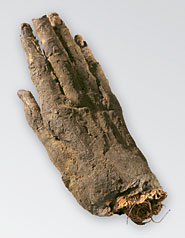Chateau de Gruyeres

History
19 counts reigned it from the 11th to the 16th century.
Michel, the last count of Gruyeres, encountered financial difficulties and had to abandon his castle in 1554. His creditors, the towns of Fribourg and Bern, shared the county. The castle was the headquarters of the Fribourg administration until it was sold to privates in 1849. The owners, the families Bovy and Balland, restored it jointly with their artist friends.
In 1938, the canton of Fribourg took over the castle and founded the museum.

Visit
The tour of the castle offers a walk through eight centuries.
The ground floor and the mighty donjon are from the 13th century while the main building was reconstructed in Renaissance style at the turn of the 16th century. The baroque interior as well as the french garden remind of the period of the bailiffs from Fribourg. Landscapes of romantic inspiration were painted by J.-B. Camille Corot and B. Menn at the middle of the 19th century.
Works of fantastic art, temporary exhibitions as well as multiple activities lead us to the 21th century.

The severed hand
Between legends…
For many years, the "severed hand" has made a strong impression on the visitors of the Castle of Gruyeres and has stimulated their imagination. Over time, legends where forged over its origin, each more dramatic than the other.
According to the most popular version, the hand was brought back from the Holy Land by valorous men from Gruyeres gone on the first crusade in 1099. Probably the hand was thought of then as a relic or talisman.
It is also said that the hand came from the confrontation of “La Tine” in the “Pays d’Enhaut. In the Spring of 1476 - not long before the battle of Morat against “Charles le Temeraire” - a troupe of five hundred riders from Burgundy and Savoy were ravaging the valley of “la Sarine”. But the count Louis de Gruyeres and his mountaineers made good guard and dispersed them. In the scuffle, one of the solders - was he from Burgundy, Savoy or Gruyeres, enemy or ally - had his hand ripped off. It was brought back to Gruyeres and kept in memory of this glorious victory at the Castle.
The following tale is no less tragic. In 1493, one year after the death of the Count Louis, the manor is said to have been the prey of a devastating fire. The hand, remains of a calcinated body, was found after the sinister. It was given to the Countess Claude de Seyssel, widow of the beloved Louis. She had the Castle rebuilt and kept the hand in memory of the catastrophe. [The recent archaeology soundings reveal that there has been no major fire on the site]
Because of the violent cut through the wrist, one thought that the hand was one of an unlucky thief. Caught, he was condemned to have his right hand cut off by the executioner.
The fingers of the severed hand are so slender that they seem to belong to a beautiful woman. The unfortunate would have been judged for witchcraft and burnt at the stake. There was only to remain of her physical beauty her hand, now claw-like and brown.
…and reality
The analysis made in 2003 by Dr. Bruno Kaufmann at the Anthropology research Institute of Aesch (BL) reveals with certainty that it is in fact the right hand of an Egyptian mummy. It has been treated and bandaged according to the classical method, used until the III century after J.-C.
The process of mummification explains its dark colouring as well as its extreme slenderness. The proportion indicate that it belonged to an adult person, probably male. Referring to its good state of conservation, quality products were used for its mummification and therefore implying that the hand was one of someone of a high rank.
At an undetermined moment, the hand was sectioned from the rest of the body with a sharp tool. This “mishap” made the bones as well as the dried up muscular fibres visible. An attempt to peal off the bandages was made - which was a success for the third finger but unfortunately damaged the middle finger.
From the end of the Middle-Ages and until the XVIII century, the mummified bodies were thought as objects of veneration. They were thought to have beneficial effects, and they were used, in powder form, as medicine (in Latin “mumia”) against all sorts of illnesses. Napoleon’s expedition in Egypt (1798-99) generated an infatuation for the world of the Pharaohs. A number of mummies appeared on the Art market and were bought by museums and passionate collectors. They didn’t fail to feed the imaginary, notably of famous writers such as Theophile Gautier and Bram Stoker.
It’s probably at this time that our mummified hand arrived on the Helvetic soil. In 1849, the family “Bovy” bought the castle of Gruyeres and took care in refurbishing it. From 1861, this work was taken up by the “Balland”. The two families designed some of the rooms in the Castle, inspired by legends. On the ground floor of the dungeon, they had installed their museum, a sort of curiosity chamber. Amongst many heterogeneous objects, was the hand.
Although the chamber as been non-existent for a long time now, the hand has remained in the manor. It was taken out of the collection only a few years ago and, due to its mysterious aura, has remained anchored in the memory of the visitors. Today, it reclaims its place in the exhibition... and part of its true history.
Raoul Blanchard, Anita Petrovski